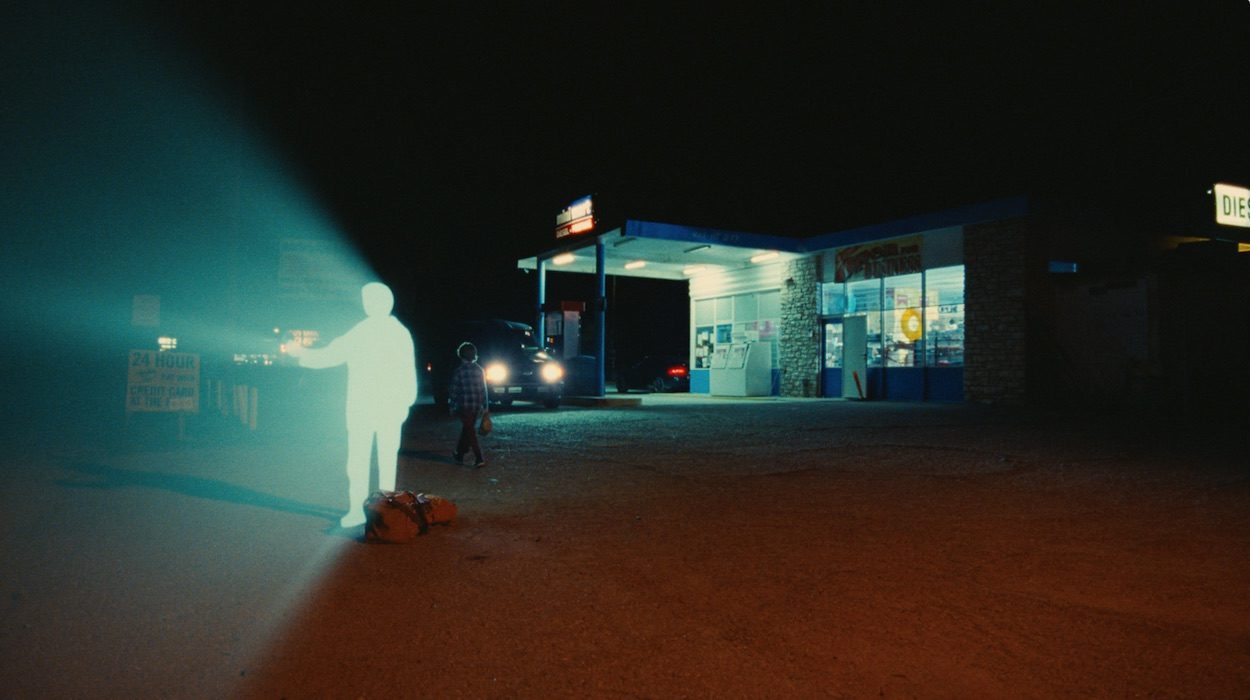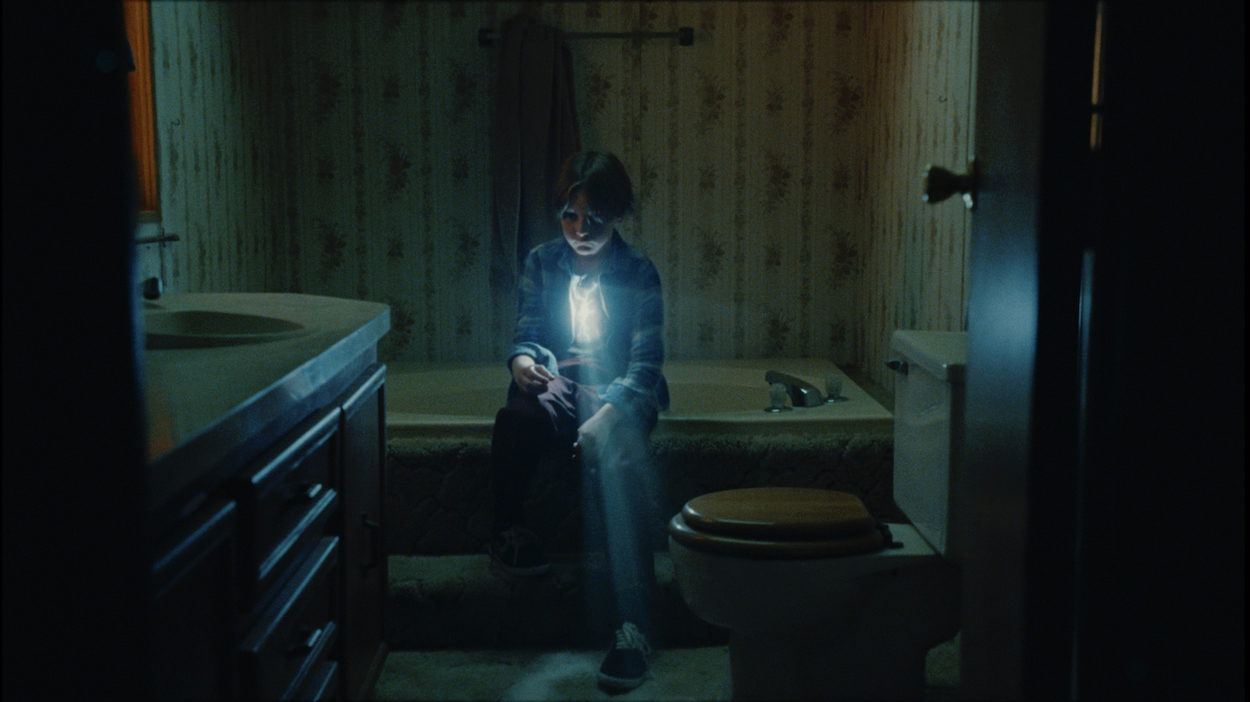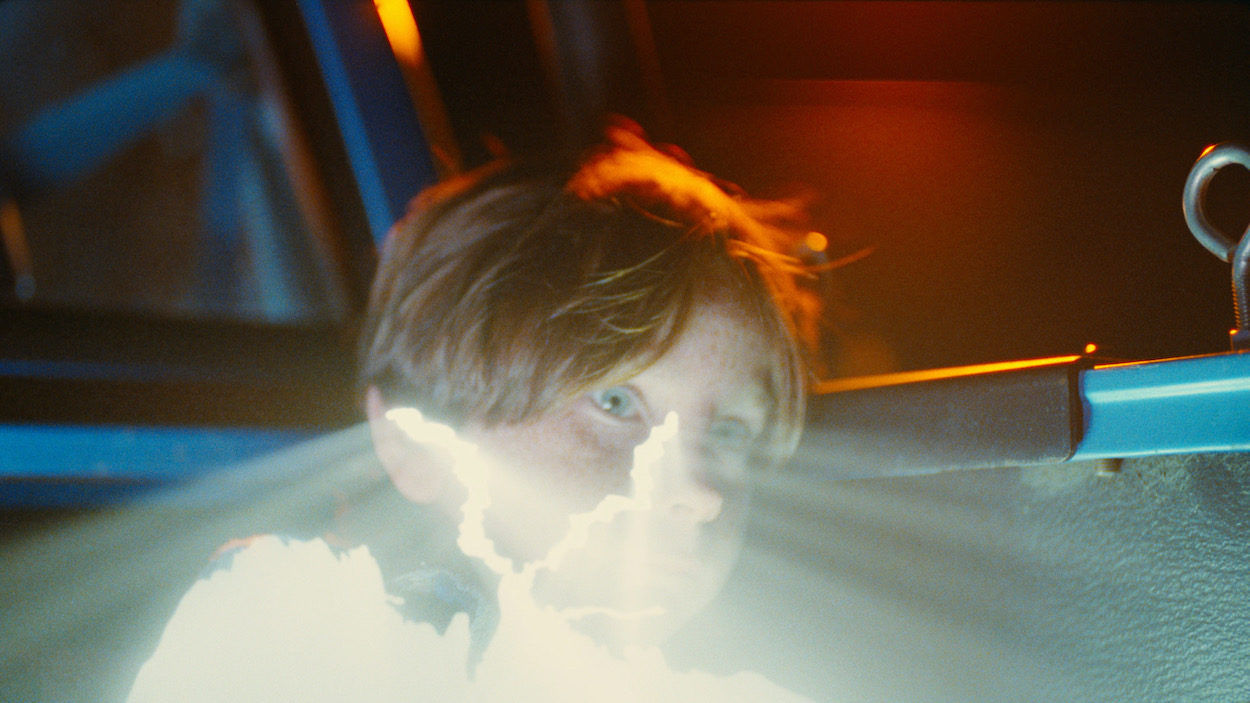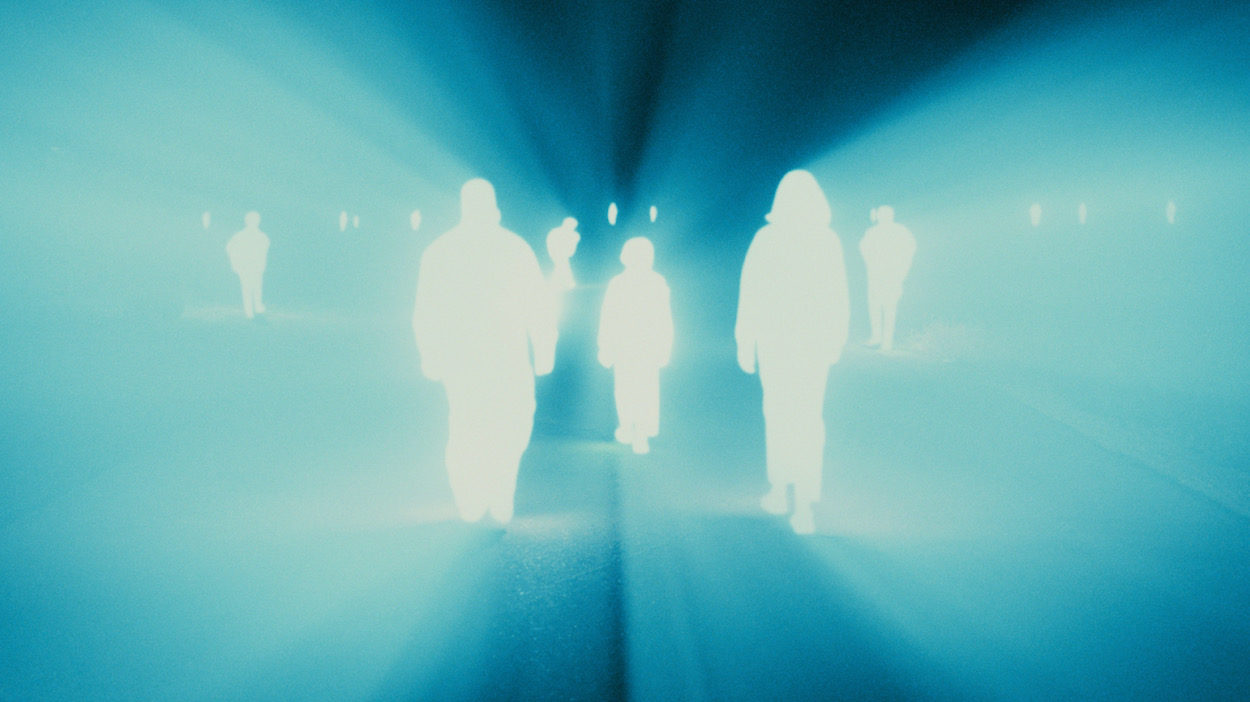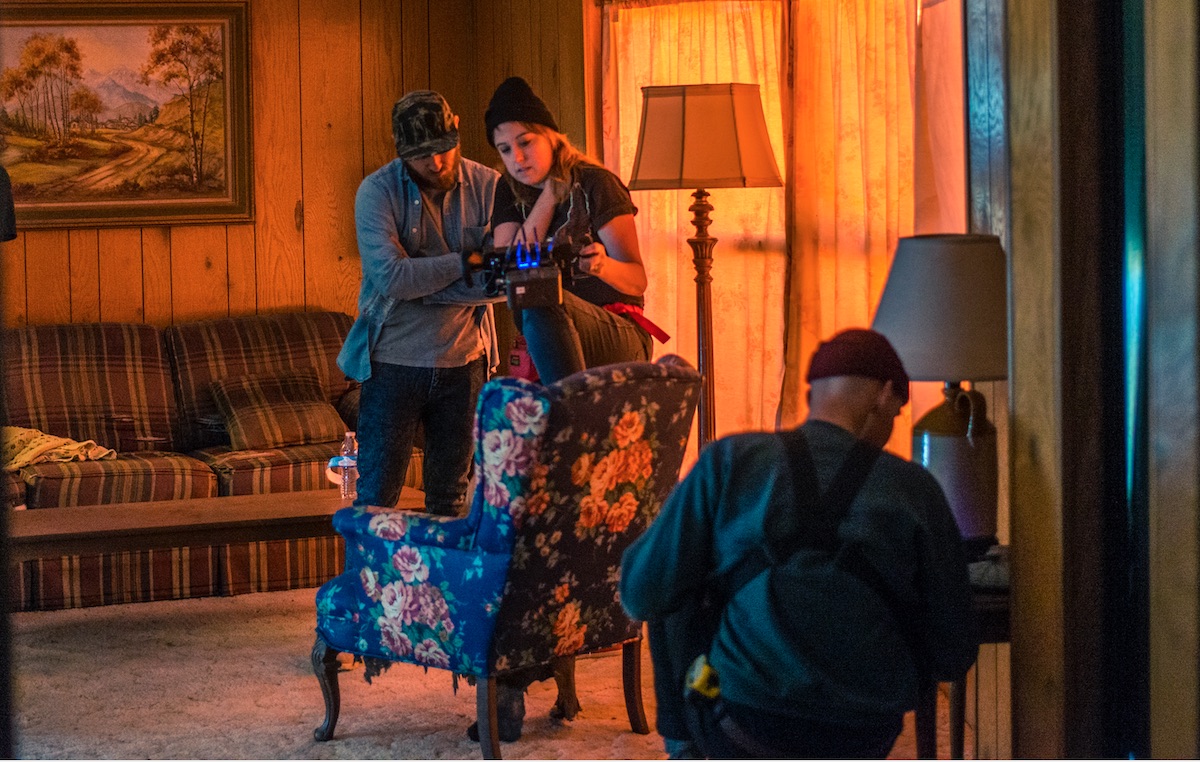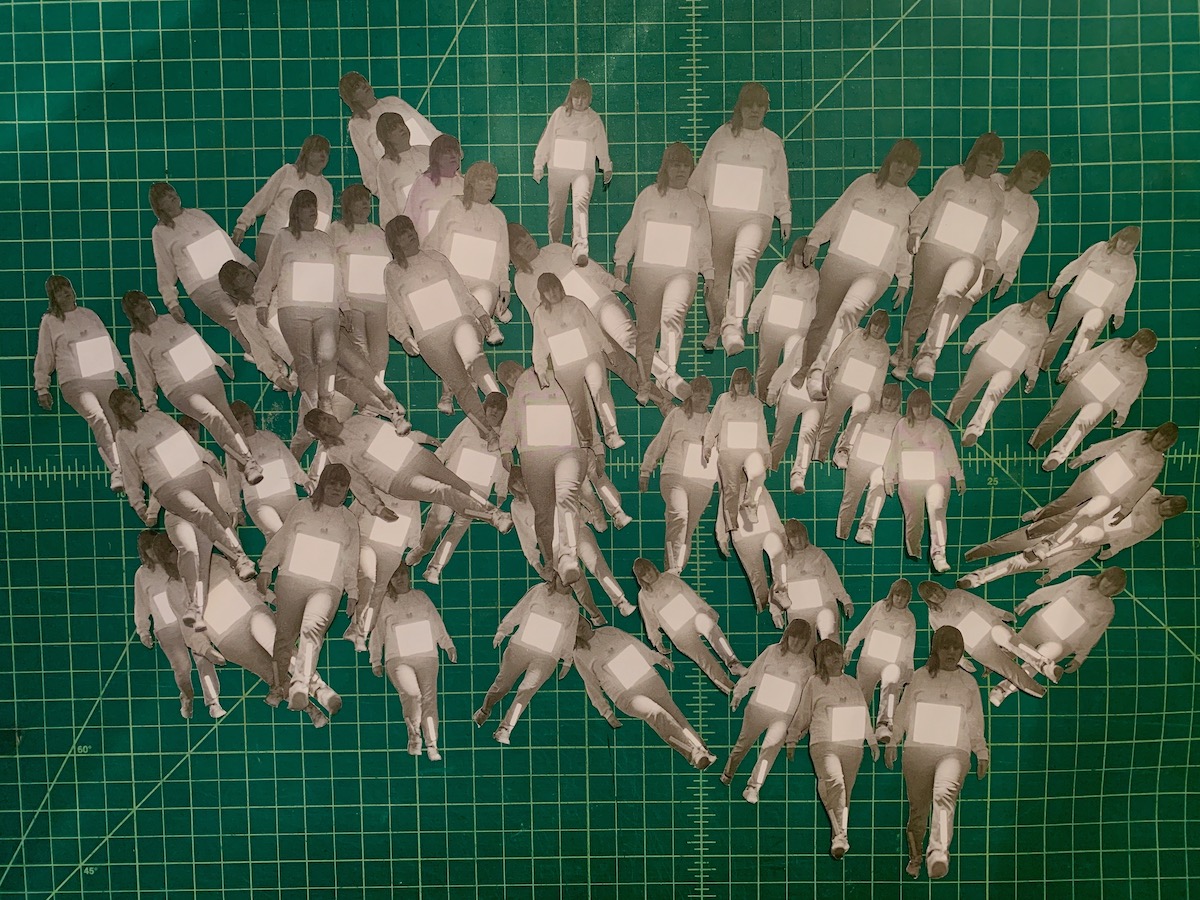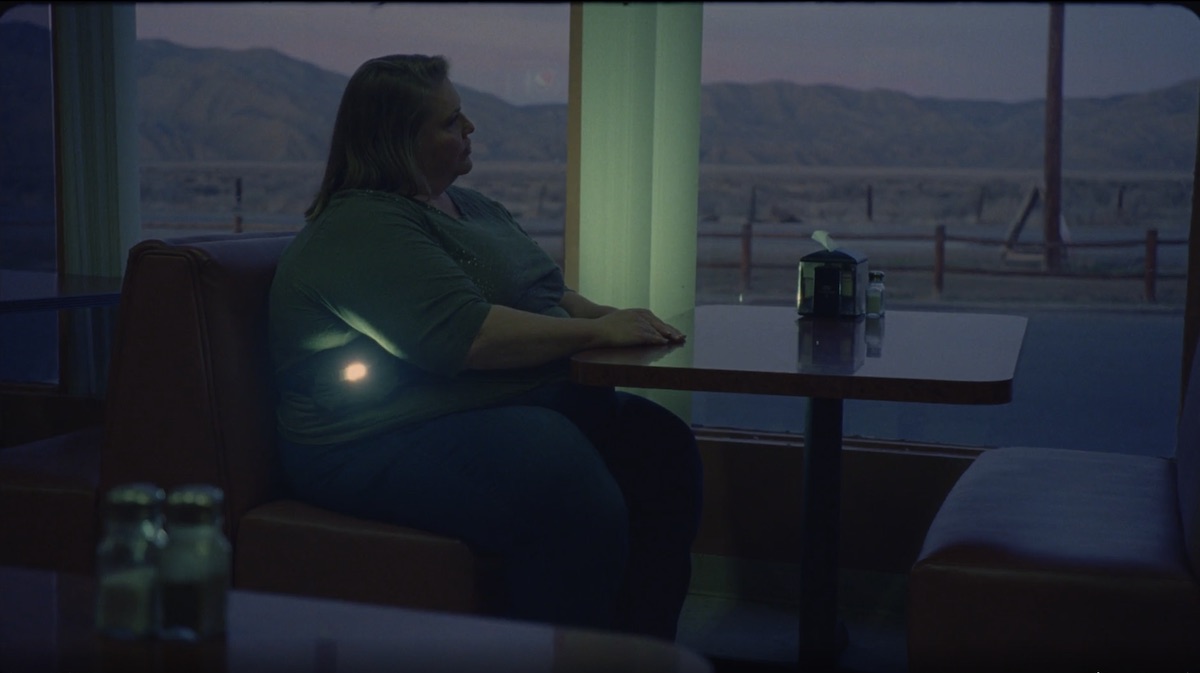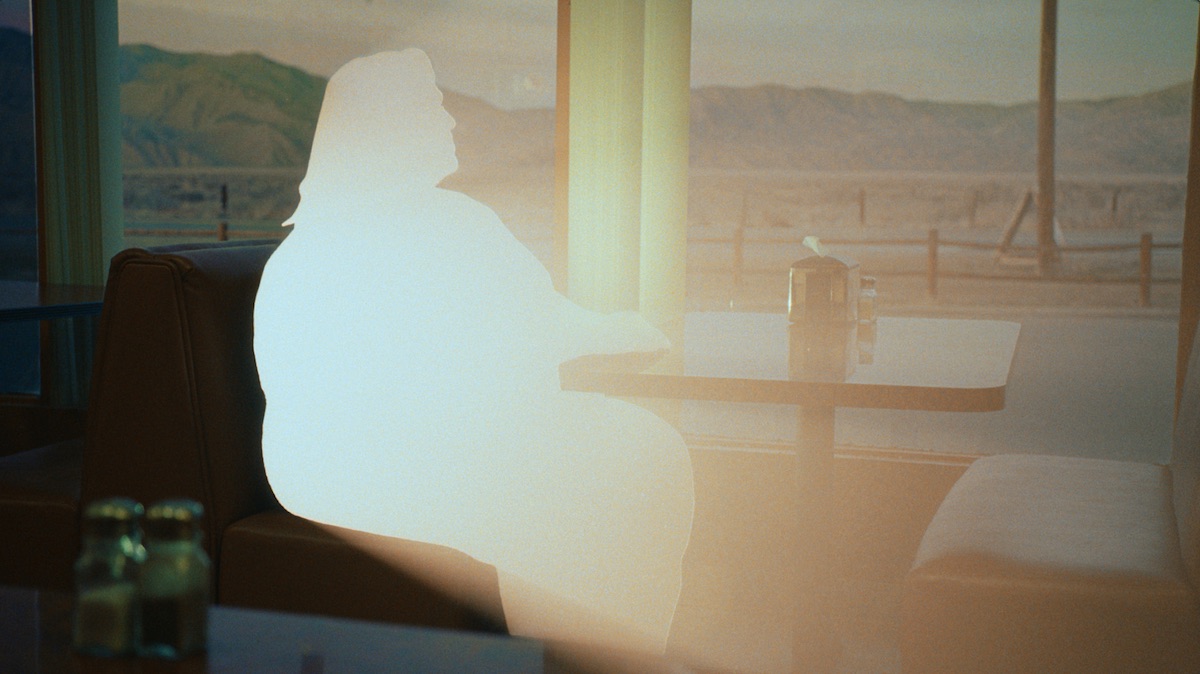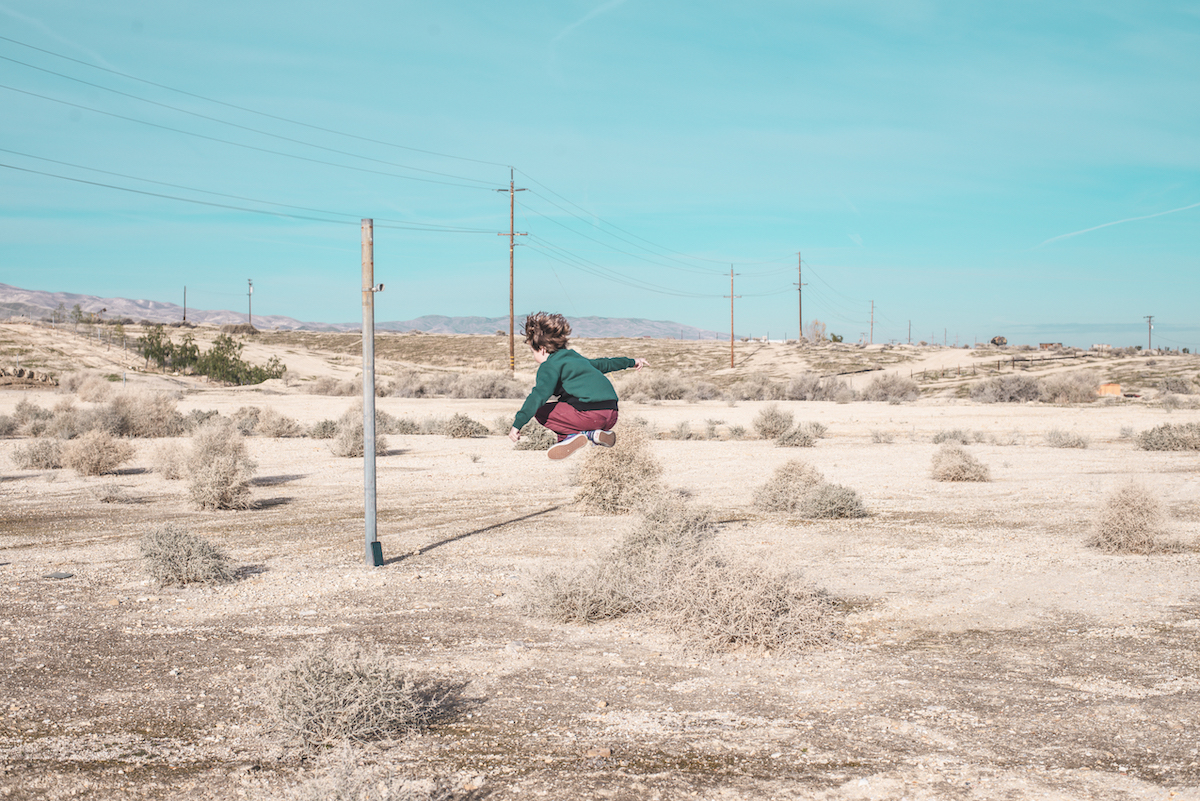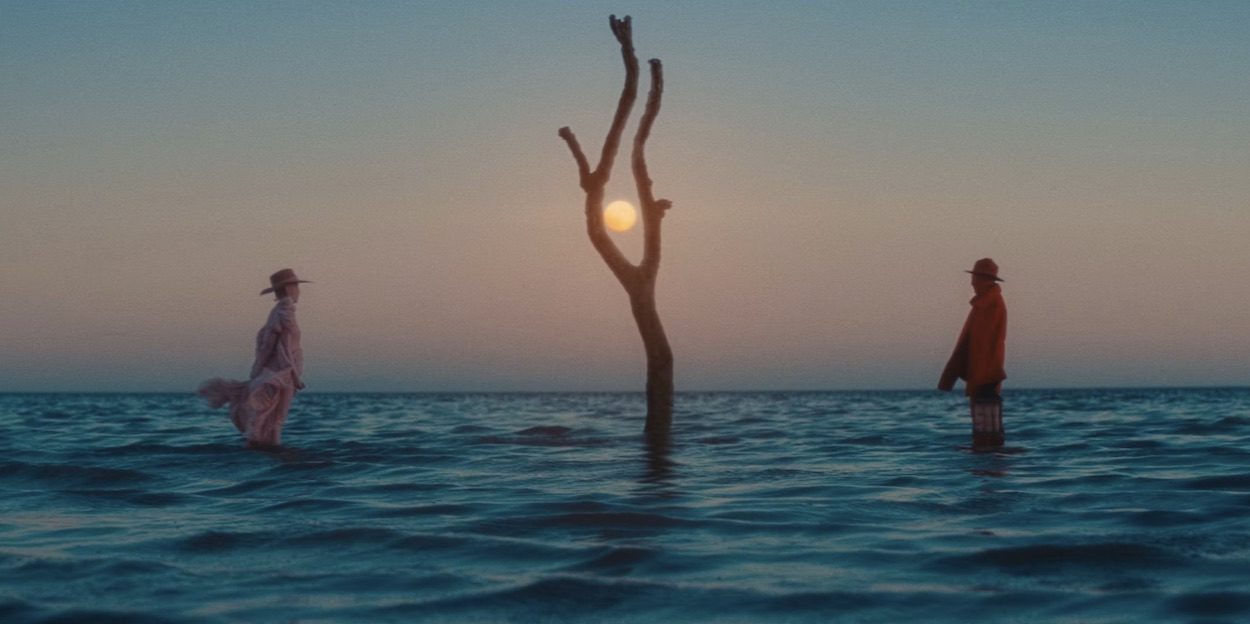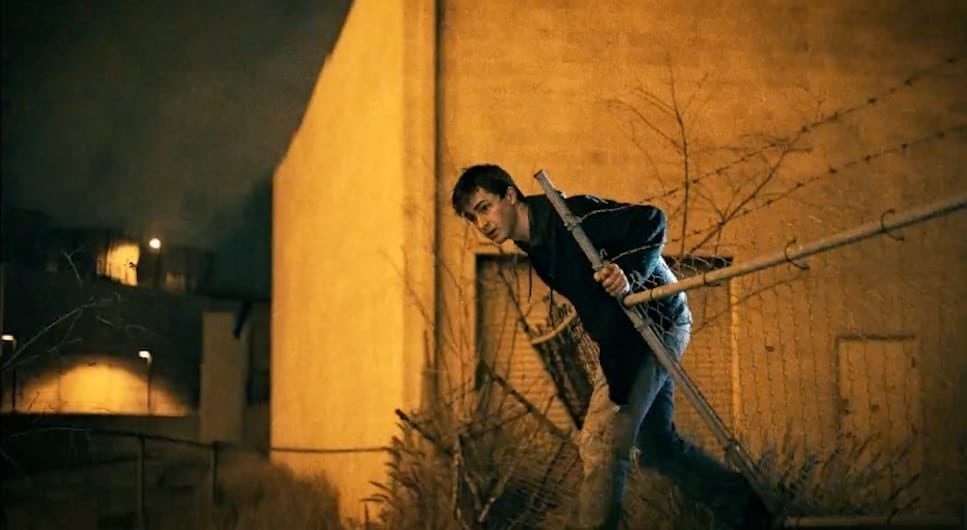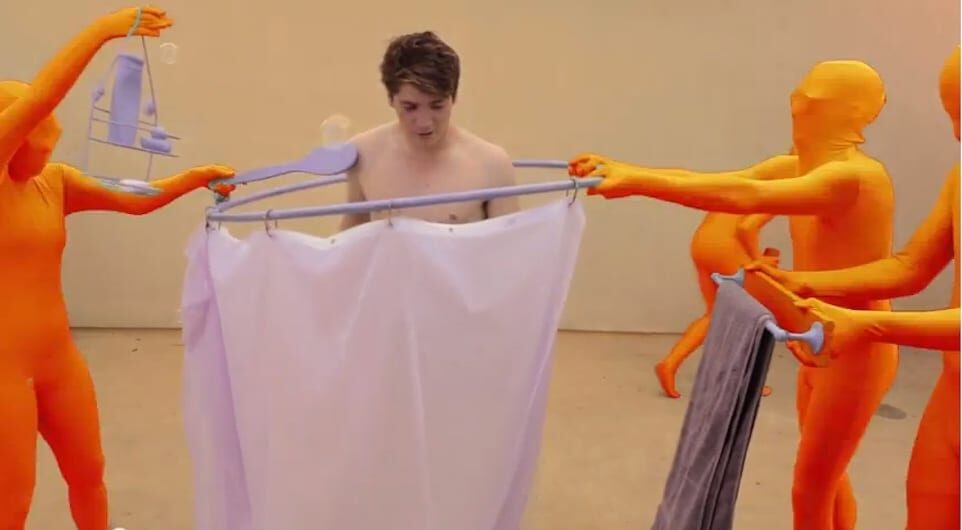Nelson de Castro and Kimberly Stuckwisch on set
Can you talk us through please how the story came about and how it evolved?
Nelson: In this case, we started with the practical light technique. It’s one that I’ve wanted to do for a while and felt like it would be a great fit for the tone of the music. Then, Kimberly ran with it like a prompt, writing a deeply personal story that gave so much depth to the original concept. The result truly felt like a hybrid of our styles, the whole being greater than the sum of its parts.
Kimberly: The lyrics themselves give you a glimpse into our current state of affairs, but we knew the band wanted to stay away from portraying anything political with the visuals. So, I wondered what is something that is so far away from politics? Children.
When listening to the song, I kept going back to the lyric…
“I had another dream, I had another life No one saw the blood on my hands When I woke, I was there alone
Where will it end?”
.. And that’s where the story of our young neglected and invisible boy began.
I’ve always been fascinated with telling stories that have elements of magical surrealism to them and I love exploring the idea that children can see the beauty and innocence in the world even when in extreme circumstances.
This story was one that was quite personal to me. The best stories come out of baring your truth and being vulnerable in your storytelling. Of course, my chest cavity has never split open and light shined out (at least I don’t think it has), but the emotions and a few of the scenes were reminiscent of past experiences in my young life.
The story itself evolved very naturally. We knew the end we wanted to get to (people radiating full light) but needed the WHY(?). We found it by playing with the idea that other people who are ignored and forgotten or abandoned by society oftentimes are the ones with the biggest hearts, the kindest souls, and you guessed it… the brightest lights. It just sometimes takes us a second to see it.
Kimberly on the cutting board: testing testing
The device of using the light to signify seemingly invisible people was “painstakingly difficult”. Please tell us in minutest detail how you achieved this light ray effect and did you ever consider CGI?
Nelson & Kimberly: The process went through several iterations. For our first test, Kimberly taped a couple 1X1 light panels to herself and walked around during sunset. We then printed frames of video and hand-cut each frame, before re-shooting each frame backlit in a haze filled room. We loved the look of the light effect but the haze washed out the rest of the image. We wanted to shoot 35mm and preserve the integrity of the image. Our producer Ian Blair came up with a great solution: If we painted our cutouts black, we could Luma Key just the light shining through, and then
lay it back over the clean footage. So, knowing we wanted to luma key the effect, we had two options: hand cut and spray paint each frame, or rotoscope and laser cut onto black cardstock. Based on our test, hand-cutting would take longer, limit our intricacy, and definitely give us all carpel tunnel. CGI was also briefly discussed but we felt strongly that the tactile feel of special effects would add more weight to the story, and make it more memorable.
On set, we taped practical light strands to our actors so their glow would affect the scene. We also used white tape to create shapes on Flynn (our lead) so our roto team would have guides to trace for us to later cut out and shine light/haze through. Our VFX artist Ryan Ross animated more complicated moments where cracks open up and move across Flynn’s body.
All of this roto and vfx animation was sent to our laser cutting team, led by Mark Nicholas. They batch processed all of the files to the laser cutting format, and hand fed each sheet of black cardstock into the machine. Each shot came to me (Nelson) as a fat stack of intricately cut black paper, numbered sequentially. We barely got these in time before the lockdown hit LA.
Kimberly: From there, Nelson shot each frame on a downshooter via Dragonframe, in a blacked-out, haze filled room at his home. The challenge at this stage was positioning the light beam to optimally fit each moment. On trickier shots, he spent nearly an hour adjusting lights before starting, checking keyframes to avoid unwanted flares. In the end, the process of capturing the frames was actually a breeze and more like an assembly line.
Nelson: Afterwards I had to mop the floor twice to get rid of the haze residue!
Diner Lady before and after glow treatment
Did it take forever to do?
All in all, the post process took about three months after we filmed.
What sustained you during the process?
Nelson & Kimberly: Seeing the passion and enthusiasm of our team really kept us going. Our laser cutting unit, led by Mark Nicholas, had to design a custom workflow that translated our roto files into proper cutting files. Then they spent weeks manually loading, processing and labelling each cut out. Seeing that kind of thought, investment and excitement from our crew (which we felt from all departments, this is just one example) is what kept the fire burning under us to do this project justice.
Kimberly: We also got to introduce the incredible new talent that is Flynn Zanco to the world. This was Flynn’s first time acting. I scoured the internet looking at skateparks and skate camps at the advice of the wonderful casting director Karmen Leech who advised me that young skate kids often have a confidence about them that translates well to film. After weeks of searching, I somehow found Flynn through several other skater’s instagram accounts and messaged his father. I travelled to Oceanside to meet and work with him to see if he was the right fit. Low and behold, Flynn was a natural. He picked up direction so easily and was a pleasure to work with. I’m still waiting though for him to teach me how to do a kickflip.
Is this the first project you two have collaborated on? How did the process work – Did you divide the project through different skill sets or did you both work simultaneously on making the film?
Nelson: This was our first time co-directing, though Kimberly has produced for me, and I’ve art directed for her over the years. I tend to focus on concepts or techniques initially, followed by finding the right narrative.
Kimberly: It’s quite interesting how opposite processes can mesh so well together. When I’m developing an idea, I try to figure out the story first. What is it that I want to say? Which emotions do I want the story to convey? Once that is solved, I’ll look for conceptual ideas to try and twist the narrative or bring in an element of surprise to compliment the story. Nelson and I work extremely well as a team as our different disciplines help strengthen one another.
Any differences of opinion? And if so, how’d you resolve it?
We trust each other, so any differences were resolved by going with whoever felt strongest and trusting in that opinion.
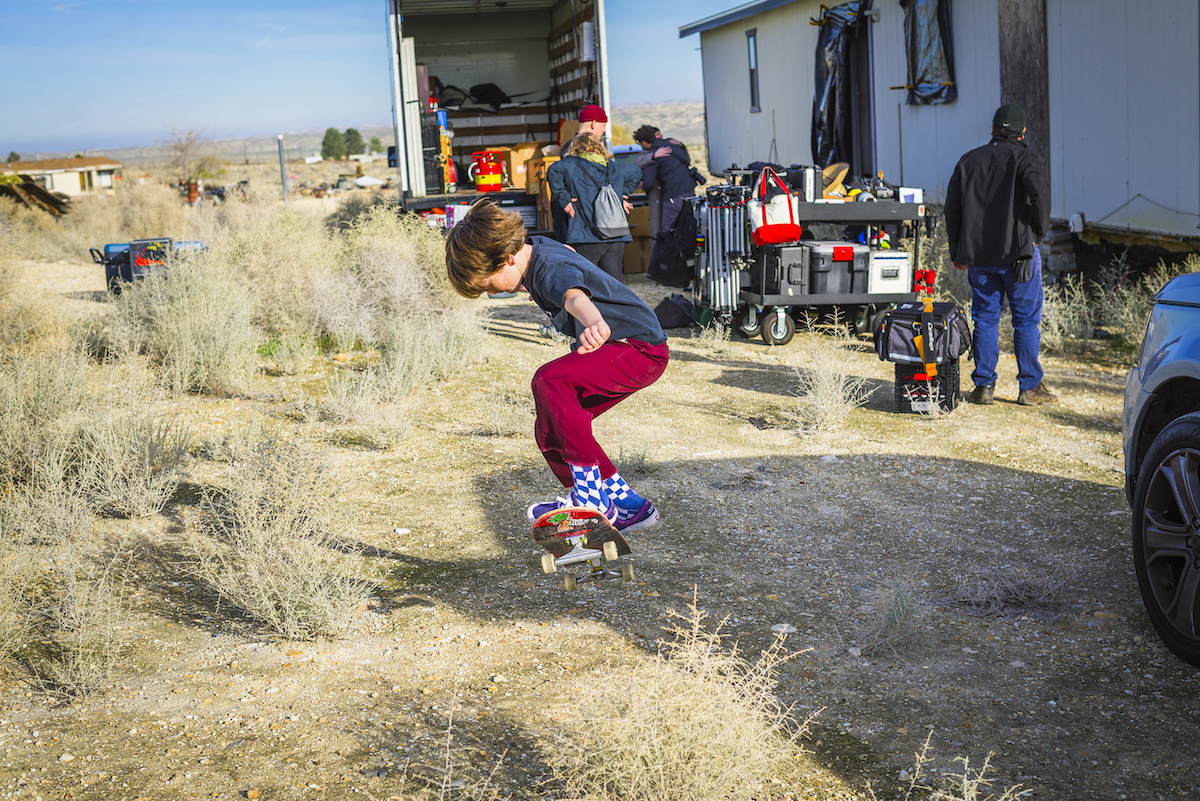 On set photography by Steve Zanco
On set photography by Steve Zanco
How are you both spending your days WFH and is there anything in particular that you’re finding inspiring to watch, read, listen to?
Kimberly: I’ve recently gone back to my roots and become a farmer. I mostly tend to the garden and hang out in my yard with my bunny aka bunz aka sexy bunny aka burt reynolds.
Nelson: I’ve spent inordinate amounts of time gardening and birding in my yard, with the goal of taming wild finches. So far no progress has been made. Aside from that, I’ve found a nice creative outlet in playing and writing music. The best thing I’ve watched lately is Middleditch & Schwartz on Netflix.
What have you discovered about yourself during lockdown?
Kimberly: That it is ok to be still and quiet.
Nelson: Oh crap was I supposed to discover something?
LINKS

